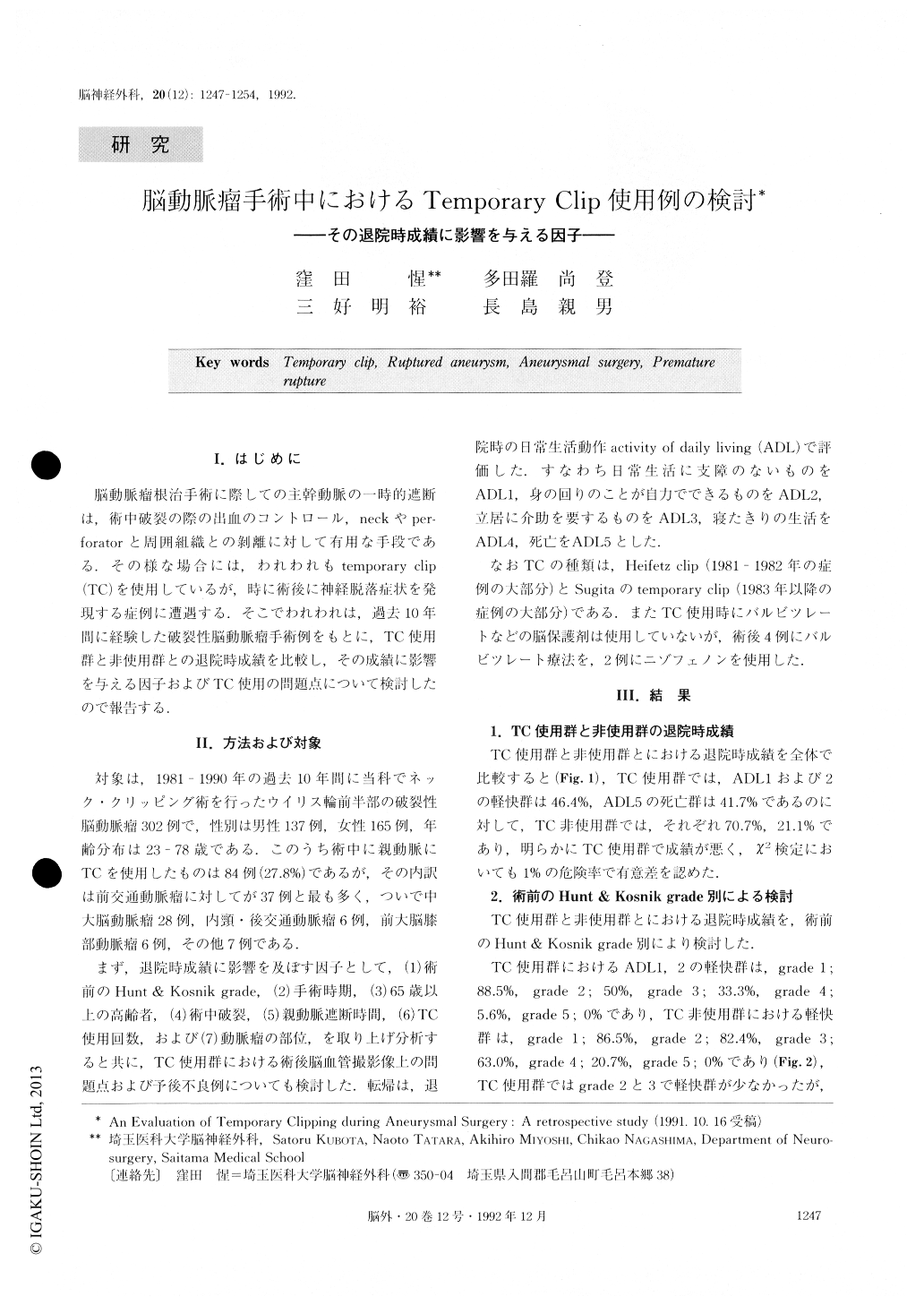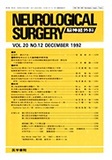Japanese
English
- 有料閲覧
- Abstract 文献概要
- 1ページ目 Look Inside
I.はじめに
脳動脈瘤根治手彿に際しての主幹動脈の一時的遮断は,術中破裂の際の出血のコントロール,neckやperforatorと周囲組織との剥離離に対して有用な手段である.その様な場合には,われわれもtemporary clip(TC)を使用しているが,時に術後に神経脱落症状を発現する症例に遭遇する.そこでわれわれは,過去10年間に経験した破裂性脳動脈瘤手術例をもとに,TC使用群と非使用群との退院時成績を比較し,その成績に影響を与える因子およびTC使用の問題点について検討したので報告する.
A temporary clipping of a parent artery has been found convenient in facilitating an aneurysmal dissection. This is because it controls the bleeding from an unexpected rupture and keeps the sac collapsed during the operation. Such a temporary arterial occlusion, however, involves the risk of a focal ischemia that may lead to permanent postoperative neurological deficits.Therefore, to evaluate the influence of a temporary clipping on the outcome of an operation, a retrospective study of 302 patients who underwent an operation for a ruptured supratentorial aneurysm between 1981 and 1990 has been conducted.
This study has revealed the information that follows:
1) Overall outcomes
In patients given no temporary clipping, their postoperative activity in daily living (AM.) grade was good in 70.7%,i. e. ADL 1 or 2, whereas only 46.4% of the patients given a temporary clipping achieved a similar ADL.
2) Influence of the preoperative Hunt and Kosnik neurological classification on the outcome
Irrespective of whether a temporary clip had been used, patients with a Hunt and Kosnik grade of 1 or 2 made a good recovery, whereas patients with a grade of 4 or 5 did not.
The application of a temporary clip in grade 3 patients led to a poor result, whereas in grade 3 patients given no temporary clipping the results were good. This would seem to indicate that Hunt and Kosnik grade 3 rating is a critical factor in consideration whether a temporary clip should be used or not.
3) Influence of the operative timing on the outcome
The application of a temporary clip during the acute stage (Day 0 to 3 after SAH) led to a poor result, whereas the recovery was good in patients given no temporary clipping. The patients in the subacute stage (Day 4 to 13) and in the chronic stage (over Day 14), regardless of temporary clipping, made a good recovery.
4) Occlusion time and the outcome
Poor results were found in patients with an occlusion time of more than 15 minutes.
5) Single or repeated application and the outcome
In patients with repeated applications of a temporary clip, the postoperative results were poor, whereas a good recovery was achieved by patients with a single application.
6) Postoperative angiogram in patients with temporary clipping
In four out of 64 patients (6.3%), postoperative angiogram showed a narrowing at the site of the clip application, and 3 of four patients subsequently expired due to brain ischemia with edema.
These findings suggest that the use of a temporary clip may lead to a poor outcome, especially in patients operated on in the acute stage (Day 0 to 3) and with grade 3 of Hunt and Kosnik classification.

Copyright © 1992, Igaku-Shoin Ltd. All rights reserved.


